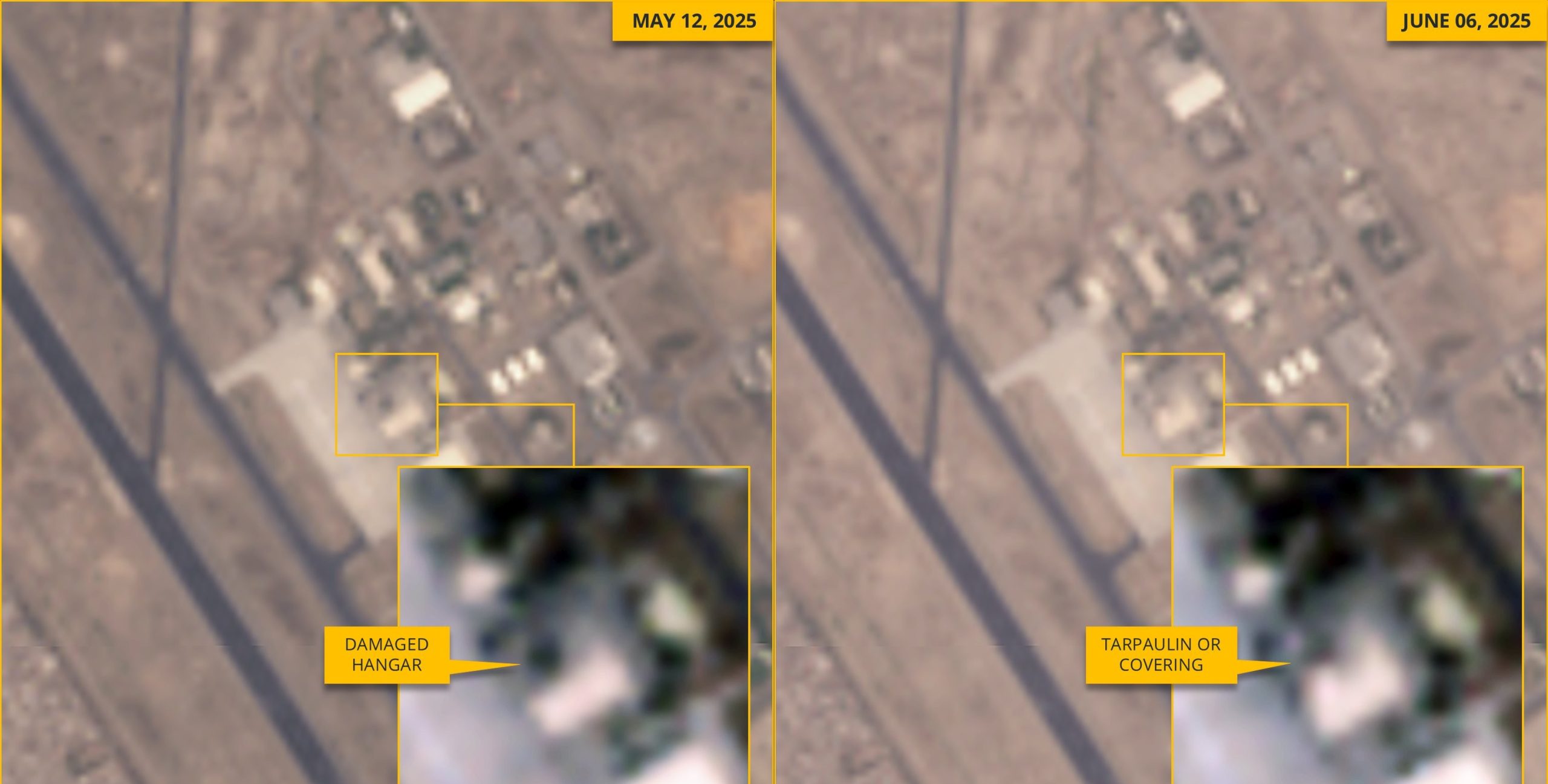New satellite imagery from Jacobabad Airbase in Pakistan’s Sindh province reveals ongoing repair activity at a hangar damaged in the Indian Air Force’s recent cross-border strikes. Images captured on May 12 and again on June 1 show the previously exposed hangar now concealed under what appears to be tarpaulin or similar materials, indicating possible restoration efforts or an attempt to shield the site from further surveillance.
Also Read: India Becomes The First Country to Strike 11 Air Bases of a Nuclear Powered Country
The damage stems from Operation Sindoor, India’s largest aerial campaign since the 1971 war, carried out in retaliation for cross-border provocations. Multiple Pakistani airbases, including Jacobabad, Nur Khan, Rafiqui, and Bholari, were struck during the operation. Intelligence reports suggest the strikes caused substantial destruction, neutralizing nearly 20 percent of the Pakistan Air Force’s infrastructure, destroying aircraft, and resulting in high casualties.
Jacobabad Airbase, formally known as PAF Base Shahbaz, holds strategic importance for Pakistan. The base has previously served NATO operations during the war in Afghanistan and currently houses elite squadrons, including those operating American-built F-16 fighter jets. The use of tarpaulin to conceal damage is consistent with tactics previously observed in past conflicts, including during the 1999 Kargil War, where Pakistan similarly attempted to obscure military losses from foreign observation and internal scrutiny.
Parallel repairs have also been observed at other targeted installations. At Bholari Airbase, a hangar suspected of housing a Saab 2000 Airborne Early Warning and Control System aircraft was similarly covered following Indian airstrikes. The pattern indicates a broader campaign by Pakistan to restore functionality and prevent additional exposure of its weakened air capabilities.
India has used Operation Sindoor to demonstrate the technological edge and strategic precision of its armed forces. According to official sources, foreign diplomats were briefed on the success of the campaign, which included the use of indigenous kinetic weapon systems and long-range strike capabilities.
Pakistan, however, has not officially acknowledged the extent of the damage or the ongoing repair work. Still, visual documentation and independent analysis confirm significant restoration activity, particularly at Jacobabad. The United States reportedly intervened in late May to mediate a ceasefire, following Pakistan’s willingness to de-escalate hostilities.
With Jacobabad’s role as a hub for multinational military coordination and high-value assets, its rapid restoration remains a top priority for the Pakistan Air Force. Yet the visible damage and need for repairs reflect the broader strain on Pakistan’s defense readiness in the wake of India’s assertive aerial campaign. As military tension lingers along the Line of Control, the evolving situation continues to attract global attention.













